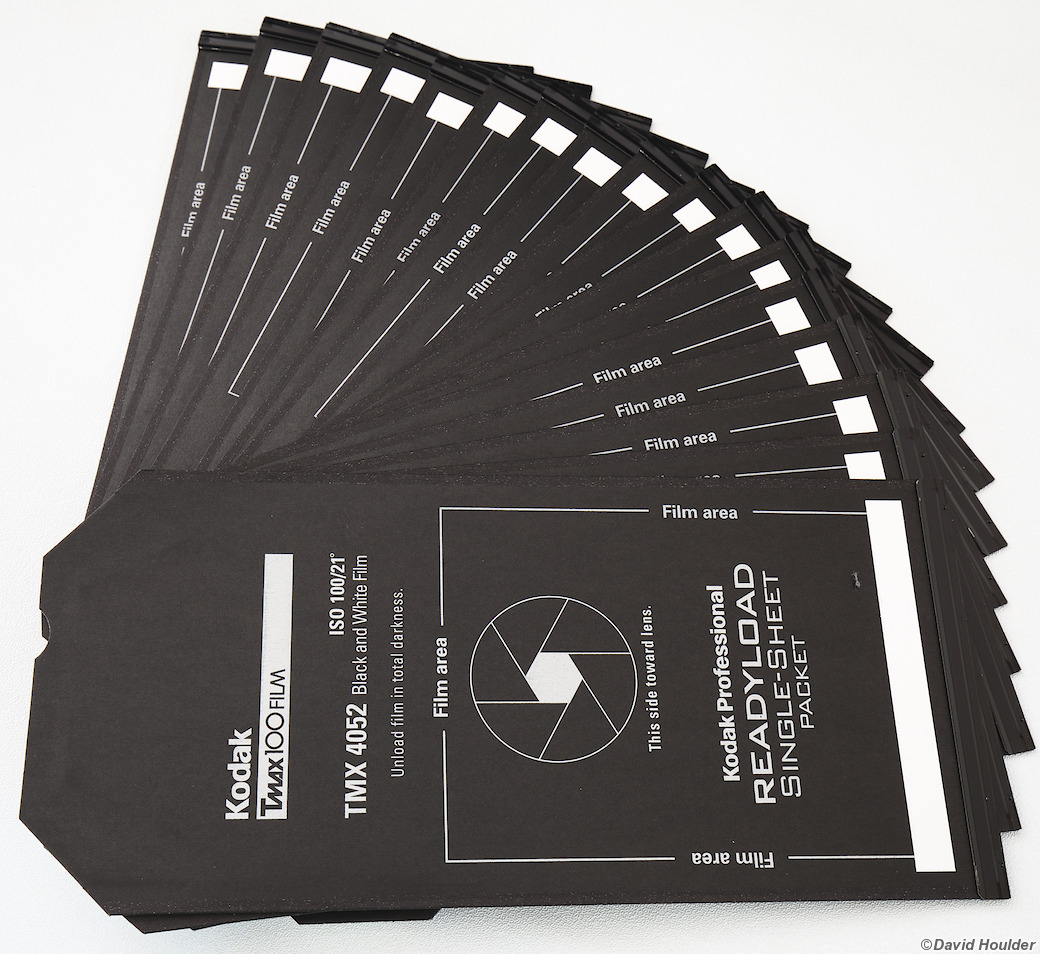Avoiding dust spots on 4x5 film

Anyone who's done any amount of large format photography discovers that getting dust on the film while you're loading it into the film holders is one of the drawbacks of the format. Because the dust is there before the exposure it leaves clear spots on negative film which then print as black spots, which are difficult to correct on the print itself. I think I've developed a technique for keeping the dust at bay most of the time. This is what I do and it seems to work for me.
- Get some ziplock bags that are just big enough to hold your film holders.
- Get an anti-static cloth. You can get these from camera stores. You may also be able to use vinyl record anti-static sprays,
- Get a can of compressed air from the camera shop. I usually hate buying aerosol anything, but a single can goes a long way if you're careful.
- Usual darkroom cleanliness helps. Vacuum the room fairly regularly, wipe down benches etc. Probably best to do this a day before, in order to let the dust settle.
- Vacuum the holders and ziplock bags. I just use a regular vacuum cleaner (overkill for this purpose) in a separate room to the darkroom.
- Wipe the bags (inside and out) and the holders (inside and out) with the cloth. I have a suspicion that dust inside the camera gets attracted to the film when you open the dark slide. Wiping everything with the anti-static cloth leaves a thin layer of conductive stuff which helps to dissipate any static charge.
- Get a baseball cap to wear in the darkroom. No kidding. It will keep extra bits of hair etc from falling on the film.
- In the darkroom, lay out the holders, bags and your box of film in a convenient array on the bench.
- With the lights off (of course), take the film out of the box and lay the whole stack emulsion-side down. I lay the stack back in the box, rotated 90° so that it sits like a diving board over the lip of the open box. With the emulsion side down, any dust that settles will fall on the back of the film.
- Load each sheet into the film holders in the usual way. I find the easiest thing is to lay the film holder on the bench, open the dark slide almost all the way and then use two hands to guide it into the slots. Without rushing things, try not to leave the slide open for too long.
- Once you've loaded all the film holders, grab your can of air and give it a test squirt. Keep the can vertical and away from your face. The test squirt will expel any propellant that got into the plumbing and helps you work out in the dark which way the air is coming out.
- Open each film holder, give the film a small blast, and close the dark slide again. Keep the can and film holder vertical. Any dust that got dislodged onto the film during the initial close/open cycle you've just done should get blown away, along with anything that settled on the film during the loading.
- Turn the lights on and put the holders into the ziplock bags.
- In the field, keep the holders in the bags until you're about the use them. The bags also serve as a secondary lock for the dark slides and stop them getting snagged on things in your camera bag. You can also put your exposure notes on a bit of paper and put it in the bag after the exposure, providing another hint against double exposure. The bags are a bit slippery, which can be annoying at times, but well worth the effort I think.
I've been using this technique for the last box of 4x5 (admittedly not a huge amount), and dust spots are now fairly rare occurrences.

These pretty much solved the dust problem, but they're no longer in production.